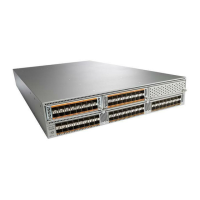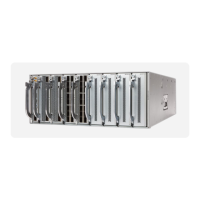•
SPAN supports 16 active bi-directional SPAN sessions.
The following guidelines and limitations apply to SPAN session where multiple destinations are configured:
•
Multiple destinations are supported for Local SPAN or SPAN-on-Drop sessions only. Multiple destinations
are not supported on ERSPAN or SPAN-on-Latency sessions.
•
The maximum number of unique destinations configured on all active sessions is 16. A single SPAN
session can have a maximum of 16 destinations, and a SPAN-on-Drop session can have a maximum of
17 destinations, in which case no further SPAN sessions can be configured.
•
You cannot SPAN a single source VLAN to multiple destination ports.
•
Connecting SPAN destination ports to a switch device is not supported.
The following guidelines and limitations apply to SPAN-on-Drop sessions:
•
Only Ethernet source interfaces are supported (port channels not supported). Sources can be a part of a
SPAN-on-Drop session and a local SPAN session simultaneously.
•
At most one SPAN-on-Drop or SPAN-on-Drop ERSPAN session may be active at the same time.
•
Directions on source interfaces are not supported.
•
FEX interfaces are not supported as sources. However, fabric interfaces are supported. Setting a fabric
interface as a source allows SPAN-on-Drop sessions to be enabled on all FEX ports associated with that
fabric interface.
•
Multicast egress drops are not spanned. SPAN-on-Drop applies only to packets dropped in ingress due
to a lack of buffer resources or when the Virtual Output Queueing (VOQ) size exceeds the preprogrammed
threshold.
•
ACL-based SPAN is not supported
•
Configuring the maximum transmission unit (MTU) truncation size for packets is not supported for
SPAN-on-Drop sessions.
The following guidelines and limitations apply to SPAN-on-Latency sessions:
•
Although SPAN-on-Latency detection is performed on a per-port basis, the span pointer configuration
is a global value.
•
The maximum latency threshold value configuration is per 40 Gigabit port. Therefore, if there the system
has 10 Gigabit ports, the latency threshold is shared by four 10 Gigabit ports.
•
At most only one SPAN-on-Latency or SPAN-on-Latency ERSPAN session may be active at the same
time.
•
You must issue the clear hardware profile latency monitor all command when the switch is reloaded
or when a module is powered on. Until you issue this command no packets are spanned.
•
Even though fabric interfaces are supported as sources, FEX interfaces and Port Channel are not supported
as sources.
•
Span-on-Latency Source cannot be part of any other span session i.e. Local Span or Span-on-drop.
•
ACL based SOL is not supported.
The following limitations apply to SPAN (local SPAN) session Access Control Lists (ACL) configurations:
Cisco Nexus 5600 Series NX-OS System Management Configuration Guide, Release 7.x
OL-31641-01 179
Configuring SPAN
Guidelines and Limitations for SPAN

